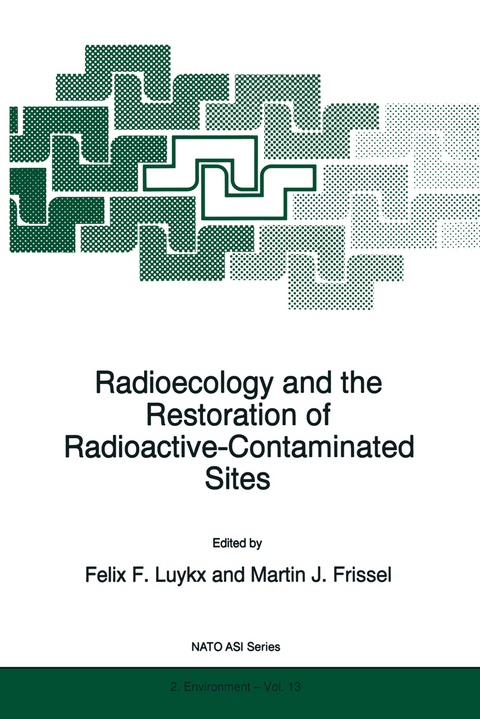
Radioecology and the Restoration of Radioactive-Contaminated Sites
Springer (Verlag)
978-0-7923-4136-9 (ISBN)
- Titel z.Zt. nicht lieferbar
- Versandkostenfrei innerhalb Deutschlands
- Auch auf Rechnung
- Verfügbarkeit in der Filiale vor Ort prüfen
- Artikel merken
The course on which the book is based was held in a region that is heavily contaminated by radioactive discharges into the environment during nuclear weapons fabrication in the 1950s and '60s, and due to a severe accidental release following the explosion of a rad-waste tank in 1957. This allowed in situ training of the students.
The book's main emphasis is on specific radioecological problems in severely contaminated areas in the former Soviet Union: the Southern Urals Trail, the rivers Techa-Isert-Tobol-Irtis-Ob, and the 30 km zone around Chernobyl. Systems examined include soils, arable and pasture land, forests, lakes and rivers. Special attention is paid to the effects of radiation on natural ecosystems: trees, soil-dwelling organisms, and aquatic organisms. Synergistic effects are also considered. Short, medium and long term countermeasures are discussed.
I Introduction.- Origin and Aim of Radioecology.- Development of Radioecology in East and West.- Inventory of Nuclear Releases in the World.- II Contamination in the Urals and Chernobyl region.- Ecological Consequences of the Activities at the “;Mayak” Plant.- Current Radioecological Characteristics of the Situation in the Area of the East-Ural Radioactive Trail.- Post-Accident Development of Exposure Conditions in the Forests of the 30-Km Zone Around Chernobyl.- III Soils and Forests.- Assessment of Radionuclide Transfer From Soils to Plants and From Plants to Soils.- Soils Role in the Restoration of Terrestrial Sites Contaminated with Radioactivity.- Radioecology in the Urals; Investigations of Hydromorphous Soils.- A Modeling Approach to Remediation of Forests Contaminated by Radionuclides.- Model for the Evaluation of Long Term Countermeasures in Forests.- Mushrooms, Lichens and Mosses as Biological Indicators of Radioactive Environmental Contamination.- Ecological Bases and Problems Associated with the Implementation of Agricultural Remedial Actions.- IV Aqueous Systems.- Method for Evaluating Radionuclide Inventories in Water Reservoirs Applied to the Beloyarskoe Artificial Lake.- Up-To-Date Studies of Radionuclides Transfer in the River System Techa-Iset-Tobol-Irtysh-Ob to Kara Sea by a Joint International Group.- Overview of Water Quality Management in the Areas Affected by the Chernobyl Radioactive Contamination.- The Application of Caesium Selective Sorbents in the Remediation and Restoration of Radioactive Contaminated Sites.- V Effects of Ionizing Radiation.- The Effect of Ionizing Radiation on Communities of Organisms.- Effects of Ionizing Radiation on Organisms of Terrestrial Ecosystems in the East Urals Radioactive Track Territory.- PhysiologicalAdaptation of Small Mammals to Radioactive Pollution.- Radiation Effects on Forests in the Chernobyl Area.- Radiation Effects in the Chernobyl and Kyshtym Aquatic Ecosystems.- List of contributors.- List of participants.
| Reihe/Serie | NATO Science Partnership Sub-Series: 2 ; 13 |
|---|---|
| Zusatzinfo | XI, 291 p. |
| Verlagsort | Dordrecht |
| Sprache | englisch |
| Maße | 160 x 240 mm |
| Themenwelt | Naturwissenschaften ► Biologie ► Ökologie / Naturschutz |
| ISBN-10 | 0-7923-4136-8 / 0792341368 |
| ISBN-13 | 978-0-7923-4136-9 / 9780792341369 |
| Zustand | Neuware |
| Haben Sie eine Frage zum Produkt? |
aus dem Bereich


